Minivans are hugely practical, not very popular vehicles.
Well, not anymore.
They were hugely popular – back in the ‘80s and ‘90s – but that was before SUVs and crossovers became more popular. A number of major brands – GM, Ford and Nissan – no longer sell a minivan at all.
But everyone (even Porsche) sells SUVs and crossovers – which aren’t as practical as minivans but have one critical advantage over them.
They’re not called minivans.
And they don’t look like them.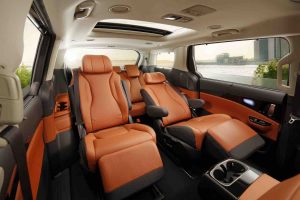
So how do you sell a minivan?
Call it something else!
And make it look like something else.
What It Is
The Kia Carnival is about the same size as a Toyota Sienna or Honda Odyssey or Chrysler Pacifica, has a pair of sliding doors, as they do, seats 7-8, as they do and has a lower ride height than a crossover or SUV, so it’s easier to get in and out of . . .
Just don’t call it a minivan.
Kia calls it a Multi Purpose Vehicle.
It’s also styled to look more like an SUV or crossover, though it is much more practical than they are because of its minivan design attributes.
Prices start at $32,100 for the base LX trim, which comes standard with second row captain’s chairs and seating for seven. You can replace the second row captain’s chairs with a second row bench that raises the total seating capacity to eight.
A top of the line SX Prestige trim stickers for $46,100. This one comes with a dual-panel LCD gauge cluster, twin sunroof panels, LCD rear seat entertainment with individual flatscreen monitors that can stream Netflix and second row lounge-style captain’s chairs that recline, with footrests that kick out.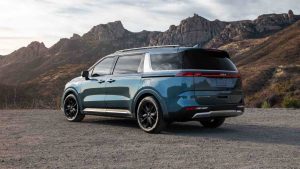
All trims come standard with a 290 horsepower V6 engine and all Carnivals are front-drive only, like most of the remaining minivans still on the market – with the exception of the Chrysler Pacifica and the Toyota Sienna, which offer AWD as an option. The latter, however, is now hybrid-only. The previously standard V6 has been replaced by a four cylinder/gas-electric hybrid powertrain and its base price of $36,728 is several thousand dollars higher than the Carnival’s.
Plus, it – and the Kia’s other putative rivals – look like the minivans they are.
The Carnival is a new name and a new look for an old idea. It replaces the Sedona, which was Kia’s minivan, with a model that is similar to it in all the ways that matter without looking the part and without having to say that name.
What’s Good
Minivan practicality without the minivan image.
Powerful V6 is standard.
Costs thousands less than obvious minivans like the Toyota Sienna and Chrysler Pacifica.
What’s Not So Good
The other name.
Minivan towing capacity.
AWD isn’t available.
Bucking the trend, Kia put a standard V6 (3.5 liters) under the hood of the Carnival – as opposed to the four cylinder/hybrid combo that Toyota has put under the hood of the latest Sienna minivan.
It is also the strongest (290 horsepower) V6 in the class, though the Honda Odyssey’s standard 3.5 liter V6 comes close (280 horsepower) and the Chrysler Pacifica’s 3.6 liter V6 (287 horsepower) comes even closer.
However, those V6s also come standard in minivans.
The Kia’s engine, which is paired up with an eight speed automatic transmission, is also a very high (12.3:1) compression engine, and yet – summoning Elwood Blues voice – it runs good on regular gas. Back in the day, engines with compression ratios as high as this Kia’s compression ratio needed 100-plus octane race gas. If you ran them on regular, they wouldn’t be running for long – due to the holes burned in the pistons caused by all that engine knocking (preignition) and even on premium pump gas, it was an iffy thing to do.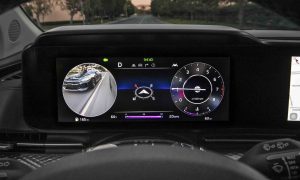
But direct engine (GDI, in Kia-speak) allows for very high compression ratios without the need for very high octane gas. The usual premature combustion is avoided – but the efficiency (and power) of very high cylinder pressures is retained.
There is, however, a downside to direct-injection, in general.
It is the potential, at least, for carbon fouling of the intake valves over time, which DI engines are inherently vulnerable to because the gas – which is also a solvent – is injected directly into the cylinders whereas in standard fuel-injection systems it is sprayed just above the cylinders, over the intake valves – where it washes down the stems and surfaces as it enters the cylinder, to be burned. This helps keep the crud of combustion from forming.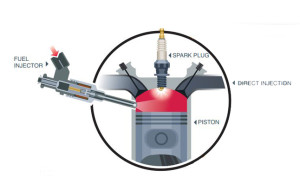
Kia addresses the potential problem of crud formation in its direct-injected engines by also port-injecting them. It adds complexity, of course. But it also greatly reduces the potential for DI-related carbon-fouling issues down the road.
One thing that isn’t available in this Multi Purpose Vehicle is all-wheel-drive, which is an oddity given how popular AWD is in practically everything else and most especially practicality touting vehicles like the crossovers and SUVs that have largely eaten up what was once the minivan’s lock on this market.
The Chrysler Pacifica and Toyota Sienna both offer AWD but the catch – as regards the Pacifica – is the cost, which is $35,820 to start. That’s before opting for the extra-cost AWD system, which pushes the cost of this minivan to $38,815 – almost $9k higher than the Carnival’s base price. That is a big price to pay for snow-day traction.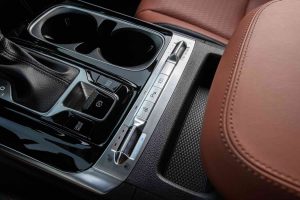
The Toyota Sienna is the only other minivan that offers AWD – and the catch here is both cost ($34,460 to start; $36,460 with optional AWD) and lack – of the power of a standard V6.
The Toyota comes only with a four cylinder/hybrid powertrain that musters just 245 total horsepower. Which is a lot less horsepower (for a lot more money) than the Kia’s standard 290 horsepower.
Of course, the Toyota is a hybrid and touts 36 MPG in city and highway mileage to offset these costs. But the Kia still manages to be capable of 26 MPG (on the highway) and while that’s still 10 MPG less than what the hybridized Sienna can deliver on the highway and in the city, you’ll always be driving – slower – and for a long time before you make up the cost of the Sienna itself in fuel costs.
There is another cost, too.
Because it is a hybrid, the Toyota has less room. Because of the need to make room for the batteries and the motors. This minivan has only 101.1 cubic feet of total cargo space, which is vastly less than this APV’s 145.1 cubic feet of total cargo space.
On The Road
My ’76 Trans-Am is a glorious relic. Emphasis on the latter. It looks (and sounds) a lot faster than it is.
Especially in the curves.
In its day – which was many days ago – it was one of the best-handling cars you could get. Today, this Kia can leave its screaming chicken squawking with the outrage of the aged at the agility of youth, with one hand on the wheel and a great stereo to make up (sort of) for the Trans-Am’s much superior engine sounds (it still aces that).
You can haul more than people in in this mini . . . whoops, APV and unlike the Trans-Am, you’re much more likely to be able to do so regularly, without getting caught.
The Trans-Am, resplendent in pumpkin orange and strutting like a rooster even when it’s parked, calls so much attention to itself that to risk even 5 MPH over the speed limit is comparable to walking into a bank wearing a mask – before that became a requirement.
In any event, the Carnival gets to 60 in just over 7 seconds and that’s neck and neck with a factory-new 1976 Trans-Am with the top-of-the-line 455 V8 and a 4 speed manual transmission, which was the quickest new American car available in 1976.
It also pulls .87 g on the skidpad, which my Trans-Am didn’t.
And the ’76 TA does not get 26 MPG on the highway – or anywhere else.
Plus, let’s be honest, while a car like the TA (even a new car like the TA) is lots of fun for short high-speed runs it is not the car for the long haul. There’s hardly room for two people and you can’t watch a movie in back, laying almost on your back. You can inside the Carnival. It can be equipped with everything you’d find in a swanky hotel suite except the mini bar, including cable (well, streaming) TV.
You can Netflix and chill – literally.
And you can carry the kids to soccer, without the soccer mom/dad vibe. This being the Kia’s trump card over its minivan rivals, which also have nice rides and are (excepting the slowed-down Sienna) much quicker than most people realize . . . but which have that vibe.
And that name.
At The Curb
There are other things you can do in this slab-sided SUV-looking Kia, too – like step in, easily.
Rather than climb in awkwardly.
This is a mini … whoops, APV, after all. That means it is not jacked-up off the ground like many crossovers and almost all SUVs. Which also means it’s much easier to load and unload it, especially given the pair of power sliding doors (standard equipment in all trims) that make accessing the insides vastly – just the right word – easier.
You could fly a small airplane through the opening. Ands when the doors are closed they look like standard SUV/crossover doors that open outward – unless you look closely.
Up front, you will feel like you’re flying an airplane, if you get the SX – which has a 12.3 inch configurable digital dash that can be toggled through various displays and which glows ethereally at night like the fly-by-wire cockpit of a 737.
The seating options are fundamentally the same as in other mini… er, rivals in that you can choose seven or eight, captain’s chairs or benches. But Kia uniquely offers the option of a pair of VIP Lounge Seats that recline rearward to an almost horizontal position, leg rests extending for the ride. This happens at the touch of a button. The seats also slide laterally on tracks built into the floor. It is nicer to ride in the back of this thing than to be riding shotgun up front.
And even though it is not a minivan – in name – it has more interior space than the named: 40.2 cubic feet with the seats up and in use and 145.1 cubic feet with them folded. To put that in some perspective, the Chevy Suburban – a gigantosaurus SUV that is 225.7 inches long from grille to tailgate (vs. 203.0 for the Kia) has 144.7 cubic feet of space with its second and third rows folded and it’s less usable space, too, because of the Suburban’s jacked-up ride height and the gigantic hump running down the centerline of the floorpan (for the driveshaft).
The V8-powered Chevy SUV is only fractionally quicker than the V6 Carnival, too – while using substantially more gas (15 city, 19 highway). It does tow much more, being an SUV – some 8,100 pounds vs. the Kia’s 3,500 pounds – and that continues to be a mini . . . uh, MPV weakness.
Many crossovers can tow 5,000 pounds or more, which no current minivan/MPV can approach.
The other weakness is snow legs. The Carnival is front-wheel-drive only. Just about every crossover/SUV either comes standard with AWD/4WD or offers it. And – being jacked-up – they generally have more ground clearance than this Kia’s 6.8 inches, which helps even in the FWD/2WD variants.
But, this isn’t a weakness in the way that not-much-room or not-much-engine is a weakness in that it only matters if you need an off-road or deep-snow-capable vehicle. If you live in a temperate area where it doesn’t snow or doesn’t snow much, AWD/4WD matters as much as having a parka in the closet in Florida. Maybe you’ll need it someday. But having the room and the engine – and the rest, including not having to climb up – you’ll have every day.
Just don’t say the word.
The Rest
Carnival. It summons thoughts of clowns. It is probably true that more people are leery of them than they are of being seen in a . . . minivan. Besides which, it just doesn’t fit. This is not a funny car.
Kia was shooting, of course, for fun – and it is – but a better name is warranted. The Carnival’s predecessor – the Sedona – had a much better name. But then, it was a minivan.
The Bottom Line
Kia has made practical appealing again. It’s a brilliant idea and it’s astounding no one thought of it until now. But thinking of it first is always what counts.
. . .
Got a question about cars, Libertarian politics – or anything else? Click on the “ask Eric” link and send ’em in!
If you like what you’ve found here please consider supporting EPautos.
We depend on you to keep the wheels turning!
Our donate button is here.
If you prefer not to use PayPal, our mailing address is:
EPautos
721 Hummingbird Lane SE
Copper Hill, VA 24079
PS: Get an EPautos magnet or sticker or coaster in return for a $20 or more one-time donation or a $10 or more monthly recurring donation. (Please be sure to tell us you want a magnet or sticker or coaster – and also, provide an address, so we know where to mail the thing!)
My eBook about car buying (new and used) is also available for your favorite price – free! Click here. If that fails, email me at [email protected] and I will send you a copy directly!





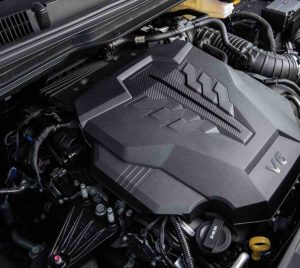









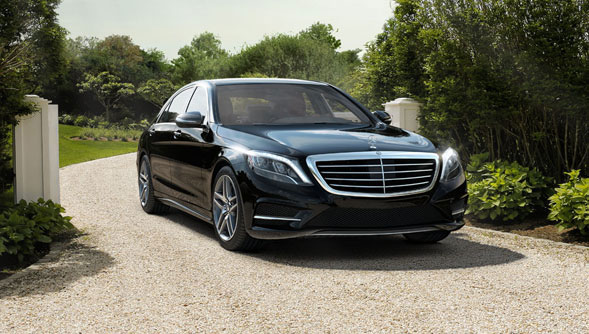
Interestingly, the original Kia Sedona for the USA market was also called the Kia Carnival in other Countries.
I purchased the first year USA version in 2002 and it still runs well; I would have no misgivings about taking it across country. Undercarriage rust…that is a big problem, however.
The reason that I know about the double-naming of the vehicle is due to research on the Kia van forums. One popular forum was for Kia Carnivals, I had no idea what they were about at first. I soon realized that they were writing about the same vehicle that we know as the Sedona in the USA.
I had to replace my transmission a few years ago; I only paid $800.00 or so for a reconditioned unit from a dealer parts dept – fantastic deal! The install was not too difficult, and I used the Valvoline Max-Life synthetic fluid…working quite well!
The last gen GM vans had a faux suv look as well (and AWD). I thought they looked pretty good. I want one but their pretty old and worn out now. I love the new Pacifica- if I had the $ that’s what I’d get.
Nice. This is probably the first boxy minivan since the second generation Chryslers.
My wife actually might like this thing, if only it had a 4wd/awd option. That is a non starter for people who live in snow zones and have to navigate the occasional mountainous road to get kids to and from schools, sports, ect. While i guess technically we live in the foothills some of the roads are very steep with lots of curves that make awd a must in snowy conditions.
Hi Antilles,
I actually like this thing…. if that counts for anything!
It does, because i trust your judgment on cars. Most likely her traverse is going nowhere but it already has had 2 warranty repairs on the fuel system and the transmission and the suv is just over 2 years old. That has big warning signs flashing in my head. She leased Fords for 12 years and in those 12 years, 1 mercury, 1 lincoln, 2 fords & the only warranty repair was for a faulty airbag censor in her Flex. She doesn’t care about much, but maximizing space and likes big suvs but is open to minivans. Toyota would have been an option had they not gone full hybrid. To me that just adds to the cost with no added benefit. The extra gas mileage to me is not enough of a benefit to justify the cost.
Sounds good, “affordable” with a decent engine. Kia and Hyundai have had many underpowered offerings. If it’s a quality product and they back up the warranty it looks like a winner.
“So how do you sell a minivan?
Call it something else!”
“There’s a sucker born every minute” – PT Barnum
Hi Jim,
I love fun cars but I also respect practical ones and minivans are that, exceptionally so. And this one is also fun – I promise. I’d never write it if it weren’t my true feeling. I wish I could have had you all ride along with me the other day. Then you’d know just how fun this van can be!
And, it’s not a bad-looker, either.
Thanks, Eric: No sooner do I send an Ask Eric inquiry about your plans for a Carnival review than – voila – I get a Carnival review. So thanks again. Also, interested readers should know these Carnivals are getting MSRP+ prices at some dealers. I have been asking around at local (Madison, WI area) dealers, and I have encountered one which is selling them at MSRP and another which wants MSRP + $3500.
PS. I tried to make a one-time donation of $100 but was unable to do so. When I enter all my info and click donate, nothing happens.
Thanks, Mark!
And – I will check in re the Donations button… this computer stuff gives me angina…
Geez, I just got a call from a dealer in Antioch, IL, which wants MSRP + $8,000 for an EX. That is by far the highest price I’ve encountered so far.
Mark,
Had 2 dealers near me do the same thing with the Tacoma. They wanted msrp + 5000 and they weren’t just doing on new. They had used Tacoma’s on the lot for sticker price+1500.
Hi Mark,
I’m not surprised, unfortunately. This is a new and very popular model. Give it a couple of months to die down, perhaps? Another suggestion: Send inquiries via email to every dealer within the distance you’re willing to drive. Tell them you’re ready to buy and make them an offer around 4 percent over invoice. It can’t hurt to ask – and you may find a dealer in some lower-traffic area that will be happy to oblige, if you’re willing to make the drive.
PS: The Donate (PayPal) button appears to be working; I ran a donation to myself and it worked! Maybe try again? If it continues to give you trouble, please let me know – and in the meanwhile, there’s always the mail!
Thanks, again!
Carnival: “Farewell to the flesh”. Yeah, I’m not sure that fits. Sounds more like something you’d call a self-immolating Tesla.
I DO like the new logo, however.
The nomenclatural transition is a little silly, however. It reminds me of that shameful and painful commercial, wherein the guy fantasizes about a pyrotechnical rock concert coming out of his minivan, in some tragic effort to convince fathers that a minivan was “cool”.
The Carnival’s styling cues may whisper “CUV.”
But its IMAGE screams “Soccer Mom” just as loud as a Sienna.
If I were in the market for a minivan, this would be a good option.
And it does look better than your avg minivan. Base price sounds better than most other carriers of this size, so + for Kia.